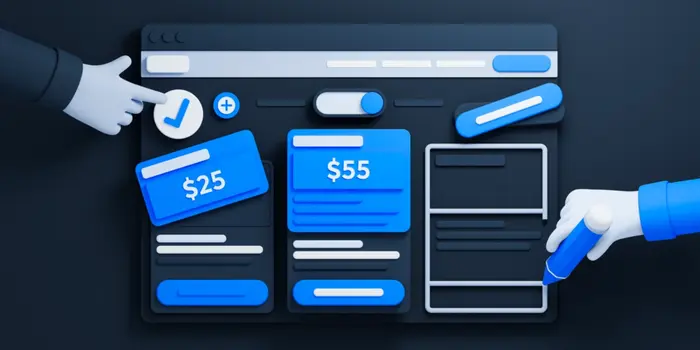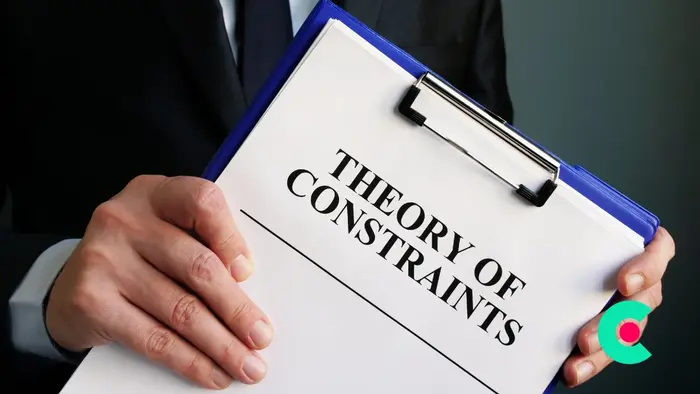Archives
Continuous Visible Customer Validation: Using Do, Doing Done to Customer Development

There are multiple methods to keep track of your projects and priorities. Here is one technique I used when trying to keep track of customer validation. This approach works best when teams are in one single location since it is visually appealing and easy to update.
It is called the Kanban method of Do, Doing and Done. A visual dashboard, which I used colored post it notes for, comprises of 3 buckets of work:
1. Do – has all the items that need to be still done.
2. Doing – what you are currently working on
3. Done – what’s finished
Typically we update and refresh the items each week – sometimes daily if there are enough changes, but a week is ideal.

Some folks have mentioned using Trello or Kanbanize. I have not, so I cant recommend them.
Once you understand how to segment your startups customers and you understand the 3 most important steps to segmenting your customers, most people start to put a framework for validating customer segments.
As I mentioned previously, the elapsed time for these 5 steps, in my experience lasts from a 4 weeks to 3 months on average.
The most important item to remember is that the method works best for discrete, defined tasks that take a short period of time. If your item takes many weeks or months, you have to break it down into simpler steps. Customer validation or pricing strategy cant be a step. Pricing strategy has to broken up into price tiers, price testing, pricing validation, pricing research etc.
When validating customer problems, you are trying to understand the following questions:
- Is this a real problem? Is is a big enough problem for them to look for a solution?
- What will it take for them to adopt a solution? Adopt my solution?
- How much will they be willing to pay to adopt?
I have used post-it notes as a great way to segment the steps in the process and use colors to validate different items I need to:
In the customer validation I put forth a process comprised of 5 steps:
1. Secondary research
2. Primary research with insiders
3. Proxy market sizing
4. Online validation
5. Customer interviews
The best way to use color is to put these various “sources” into different colors. So, influencers may be blue, proxy sizing sources may be yellow, etc.
When you get to the customer interview step, you are likely finished with the previous steps, so you can color code segments of your customer with different colors.
So “Segment A” will be yellow and “Segment B” will be green and so on.
The reason for colors is then you can put them all into a board at the end and find a way to look for patterns that correlate.
The big advantage of the visible productivity map is that everyone is motivated to make changes to the charts so you can see progress daily. Try it and let me know if it works for you.
Archives
How “Clustering Illusion” Stalls More #startups Than Any Other Bias

When you are doing your initial customer development, by talking to many potential users, there are many cognitive biases you need to be aware of.
Cognitive biases are tendencies to think in certain ways that can lead to systematic deviations from a standard of rationality or good judgment.
Usually most founders tend to solve problems they have exposure to or those they are aware of, or those they believe to be one that’s a large market. This stems from the “scratch your own itch” phenomenon.
I had a conversation with a founder who is building a consumer internet company, where viral effects of her product determine the growth trajectory more than any other metric. Or so, she had learned from many other founders experiences – both by talking to them and investors in the space.
After 3 months of building her mobile eCommerce product, she and her cofounder launched it in the marketplace. Initial traction was good and trending ahead of their expectations. Many of the early users were impressed with their product selection and merchandise.
Growth after the 4th month though, stalled as they were on the road trying to raise their initial funding. Most every entrepreneur knows that fund raising can be a full time job. In fact I have mentioned several times that fundraising is a poker game more than chess.
When they were trying to show their initial user growth, many investors had the same problem – was their product a trendy, 3-month-uptick or a sustainable-fast-growth business?
After hearing this from the 5th seed investor, they determined that they need to look closer at their numbers, their repeat purchase behavior and address the issue before they were going to raise any funding.
Looking at the initial numbers suggested their they had many buyers who got to know about them through word-of-mouth, and the repeat purchase was high.
She and her cofounder determined that they had to improve their virality coefficient.
This is the bias I see most often: clustering illusion.
The clustering illusion is the tendency to erroneously consider the inevitable “streaks” or “clusters” arising in small samples from random distributions to be statistically significant.
When you have very little data, you have very little data. That’s it.
Don’t make assumptions about the overall market based on very little data.
There are times when you have 60% of the data and you have to make a decision. There are times when you have 30% data and you have to make a decision.
The difference between 30% and 60% is a lot. In fact, most entrepreneurs I deal with confuse having 3% of data with 30% of data.
To reduce clustering illusion the only remedy is to get more data. You will have to run more, smaller, experiments, over smaller periods of time and do it consistently. Make your assumptions, document your hypothesis, but continue to work on getting more data.
Turns out the real problem for our entrepreneur was that the overall market was much smaller, and they found it after 1 year of trying to increase their virality coefficient. They did raise their initial funding, but have since pivoted to expand their merchandise offerings to cater to a larger market.
Archives
How to name your SaaS pricing plans? A primer from 89 examples

There are over 7500 SaaS companies according to angel List. Over the last few weeks I had a chance to review 89 of the companies to understand their free to paid conversion and also a chance to talk to 13 companies. What I learned was that time spent on the pricing page was a key indicator of conversion and you can A/B test your pricing page for colors, position of your highest and lowest prices, number of plans showed, feature listing and your call to action.
I did notice that of the 89 companies, 82 of them gave their pricing plans “names”. Each plan had a name so their customers could associate the name with the plan. Most (over 80%) used standard and conventional names but it was interesting to see the spread. Here is the data from 89 companies and 251 plans.

The most important points you want to take away are the following:
1. Even though SMB and SOHO (Small Office, Home Office) users are the first few to sign up for a SaaS service, 3 of the top 5 names were named Enterprise and Business and Large. I would imagine this has to do more with the inside out naming (the plan is large or enterprise, not the company buying it).
2. The plans named “Small or equivalent” were largely in the bottom quartile of the distribution. Even though over 70% of companies had 3 plans, only 35% of them named the smallest plan as “Startup”, “Starter” or “Lite”. The most common starting plan was named “Standard”.
3. Of the 20% of companies that used “custom” names like Boutique, Tyrannosaurs, or Garden named all their plans uniquely. The surprising element of the companies that used custom names was that most of them had images to convey the “size” of the plan.
There were some other surprising things I learned as well in my discussions.
1. In naming plans, understanding the end customer’s billing and invoicing was key. Most customers got an email invoice (a few sent PDF invoices) and they would either file them or expense those invoices (if < $50) or would send the invoices to an accounting team.
Ensuring that the “accounting” team did not ask any questions was the consistent mention among 3 of the startups with custom names for plans.
2. Naming the plans to support your payment gateway is also critical. Getting too cute with names means the payment gateway will support a higher refund request that were marginal.
3. Many of the companies had to setup standard names so their marketing and product management teams could do better analytics and research on the backend, consistent with their reporting. Surprisingly, if the names were “standard” the companies found it easier to have a conversation to understand conversion rates, pricing options and changes with their finance teams, design teams and other outsourced companies as well.
Archives
Creating Artificial Constraints as a Means to Innovation

Many of the entrepreneurs I know have created new innovative startups thanks to real constraints they had. For example, I was hearing AirBnB’s Brian Chesky, on the Corner Office podcast and he mentioned that when he and his cofounder were trying to get some money to get started and the only way to keep afloat was to “rent” their air bed they had in their room. That, then led to Air Bed and Breakfast, which is now AirBnB.
This was a real constraint they had – no money to “eat” so they had to make it happen somehow.
I have heard of many stories of innovation where in the protagonists had real constraints of either financial, technology, supply, demand, economic, social or any number of other characteristics.
The interesting story that I have also recently heard of how Facebook has “pivoted” from being a desktop offering to getting a significant part of their revenue from mobile is how they were given the arbitrary constraint of only accessing Facebook via the mobile phone.
So there are ways that you can create “artificial” constraints to force innovation to happen.
Most larger companies and some smaller ones as well, have to constantly find ways to create artificial constraints – to find a way to innovate and be more be a pioneer.
While some constraints are good – lack of funds at the early stage for example and lack of resources, there are entrepreneurs that are stymied by these constraints and those that will find a way to seek a path to go forward.
I think this is a great way for you to think about innovating in a new space. If you have constraints, find a way to use it to your advantage.
-

 Business2 days ago
Business2 days agoWhat I Learned in My First Month of Running a Startup Accelerator
-

 Business3 weeks ago
Business3 weeks ago5 Profitable Digital Business Ideas, Increase Your Income!
-

 Archives3 months ago
Archives3 months agoHow Can You Tell If An Angel Investor Is “real” Or “fake”?
-

 Business1 month ago
Business1 month agoIndividually Proficient, Collectively Efficient; Why Your First Hire Matters
-

 Business32 mins ago
Business32 mins ago6 Affordable Co Working Space around the Globe
-

 Business32 mins ago
Business32 mins ago6 How to Make a Business Presentation More Relatable
-

 Archives1 month ago
Archives1 month agoHow Accelerators Make Money To Manage Operating Costs
-

 Politics1 month ago
Politics1 month agoPrediction of Global Economy in 2024, Indonesia The First ASEAN Country Most Confident to Create This Program
